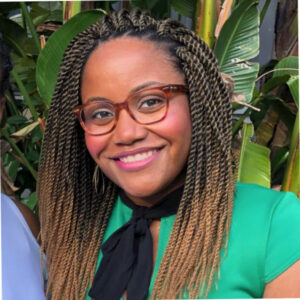It’s Women’s Equality Day and this year’s theme celebrates the 1920 adoption of the Nineteenth Amendment to the United States Constitution, which prohibits the states and the federal government from denying U.S. citizens the right to vote based on sex. While we celebrate the milestone of women’s voting rights, there are still many issues surrounding women’s equality today. The tech sector is only a piece of the working world, where women are underrepresented in leadership roles and opportunities.
According to Dr. Shirley Knowles, Chief Inclusion and Diversity Officer at Progress, women are a minority making up just 30% in 2021. “For leadership, the figures are even more shocking with less than a fifth (19.2%) of Fortune 500 CIOs being women,” she recently shared with HR Daily Advisor. “If those numbers are to change, real action must follow the sentiments so frequently expressed. At Progress, we have many initiatives designed to encourage and empower women. We have a company-wide Employee Resource Group (ERG) ‘Progress for Her,’ which provides women the tools they need to build their networks and professionally develop. We also offer women self-paced learning modules and peer coaching, which can be done at their own pace and thus do not risk excluding part-time working mothers or those who have career gaps due to maternity leave.
“Women’s Equality Day is the perfect opportunity for all organizations to reflect on their initiatives to support women and to ensure that they’re doing everything they can,” she continued. “It’s important to be objective and assess whether the organization’s initiatives are creating real change, not just paying lip service to the idea. Eradicating bias at recruitment level is just the beginning.”
Erin Dertouzos, vice president, people strategy at strongDM, agrees. “In honor of Women’s Equality Day, I want to encourage company leaders who are looking to improve gender diversity in their organizations to start at the beginning: the hiring process,” Dertouzos says. “Requiring certain degrees, or the job description itself eliminate who applies. Many studies show that women are less likely to apply to roles if they don’t think they fulfill every required aspect of the position, which can be a barrier to bringing on more female talent to your team.
“Companies also need to think about how women experience interviewing,” she added. “When people see folks that look like them, they’re more likely to want to be a part of that team. We also need to think about the actual environment’s candidates are interviewing in. I once worked somewhere where women weren’t passing whiteboard engineering exercises at the same rate men were. One day I understood why, after I noticed a group of male interviewers standing in the doorway while candidates worked on coding problems. After we shifted where the interviewers were positioned, improvements on the test came almost immediately. By examining every facet of the interview process, company leaders can create more space for diverse talent which will only serve to benefit the organization in the long run.”
For Jen Locklear, Chief People Officer at ConnectWise, Women’s Equality Day is an opportunity to reflect on how far women’s equality has come over the past 100 years. “There are more women working in the technology sector than ever before, making some incredible contributions,” Locklear says. “However, now is not the time to rest on our laurels. There is still a significant gender bias in the industry with women often expected to meet higher standards, yet still being paid less than their male counterparts.
“Organizations should consider what they can do to propel further change, exploring initiatives such as offering additional support for women who are balancing caring responsibilities alongside their work,” she noted. “Or offering flexible working. Perhaps they could deliver a female-centered mentor program to support women’s career progression. Ensuring the recruitment process is assessed for bias is another important consideration. It’s only by assessing policies and practices that organizations can instigate actionable and lasting change to close the tech gender gap. We all have a collective responsibility to ensure that women’s equality remains a top priority this Women’s Equality Day and beyond.”
Finally, Gianna Driver, CHRO at Exabeam, agrees that representation of women has improved, but work remains to address persistent gaps within the talent pipeline. So, what do HR leaders and organizations need to do moving forward, no matter their industry? Driver says it’s important to remain vigilant and intentional to create healthy, diverse, thriving cultures.
“This entails actively investing in the growth and psychological safety of all employees,” she explains. “Embracing learning, normalizing mistake-making, and listening go a long way toward cultivating environments conducive to empathy and the celebration of diversity. The journey of inclusivity isn’t linear, isn’t defined by reaching an endpoint, and takes continual, iterative tending. When diversity, equity and inclusive practices are implemented effectively, organizations become vehicles for embracing vulnerability, empowerment, and the celebration of authenticity.
“At Exabeam, we are consciously leaning into and listening to the voices of trans and cis women as well as our non-binary community,” she added. “We value diverse perspectives and know this translates into business results, but more, it translates into a more fun, authentic and human work experience. Campaigns like Women’s Equality Day highlight the importance of amplifying our efforts in creating a safe and inclusive environment where everyone knows they belong.”




